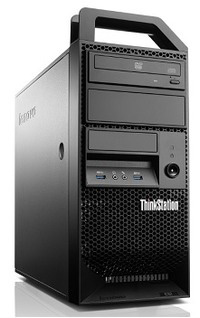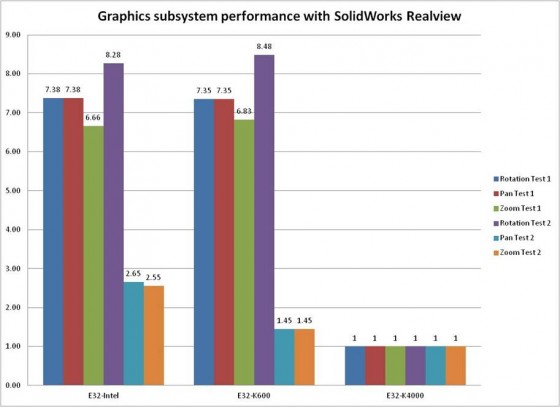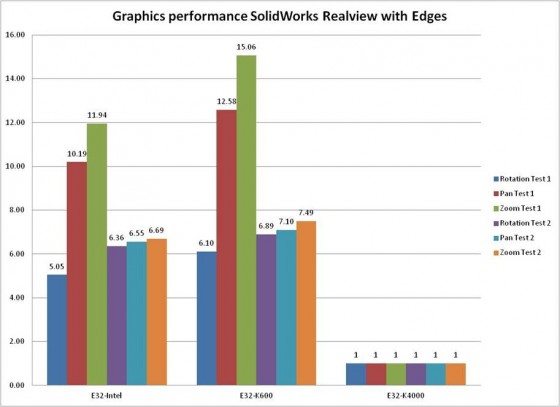Using a Lenovo ThinkStation E32 to test discrete vs. integrated GPUs found Intel is gaining ground on Nvidia.
By L. Stephen Wolfe and Jon Peddie

Waiting for a CAD workstation to finish loading a complex model, or drawing or rebuilding one, saps productivity and is as annoying as being stalled in traffic. Workstations are continuously getting faster, so for computationally demanding tasks, it makes sense to upgrade whenever your current system seems slow.
Today one can purchase a workstation certified by SolidWorks for less than $2,000 in most cases. Amortized over a three-year life, the cost of a new workstation is about $1.83 per day, about as much as a daily Starbucks coffee.
As an experiment to evaluate embedded GPUs vs. entry-level and high-end workstation AIBs, we developed a series of benchmark tests for SolidWorks 2014 that simulate the most time-consuming tasks in a SolidWorks designer’s day. By running these tests on a variety of workstations, we determined the relative performance improvements to be gained from each one.
For our test setup we used a Lenovo E32 workstation with an Intel 3.7-GHz E3-1245v3 CPU with P/4600 embedded GPU, with and without an entry-level Nvidia Quadro K600 AIB and a high-end Nvidia Quadro K4000 AIB.
The ThinkStation E32 was equipped with four 2-GB (8 GB total) 1600-MHz UDIMMs, a 500-GB 7200-rpm HDD, plus a 480-GB Intel Cherryville SSD. It was running Windows 7 64-bit.
We were surprised to find that on the various shading tests, the Intel P/4600 graphics is on a par with the Quadro K600, as you can see from the charts below. Note that lower scores are better, indicating faster performance.
We normalized the scores, which are elapsed time, to the powerful Quadro K4000 AIB.
Some of the differences between the Quadro K4000 and K600 are worth noting. For example, the K4000 enables order-independent transparency correct to the pixel level. This transparency capability operates entirely within graphics memory, so it’s really fast. However, it requires AIBs with a minimum of 2 GB. The K600 has only 1 GB. The K4000 has 3 GB. The transparency enhancement works with regular shading as well as RealView and with edges on or off. More SolidWorks users employ transparency than one might think. Designers of machinery may make certain components transparent so they can see through the walls of their equipment.
We discovered that on some processes, the Intel graphics are faster. On others, the K-600 is faster, but the differences are not large enough that most designers would notice. In pure hidden line mode, neither system offers any benefits. As discussed before on benchmarks, the K-4000 smokes them all, but in practical use this better performance is hard to detect.
SolidWorks users who want a highly functional entry-level system for most tasks will find Intel’s embedded 3D graphics processor to be absolutely good enough. Those who require exquisite visual appearance with minimum delays should use a high-end AIB like the K4000.







